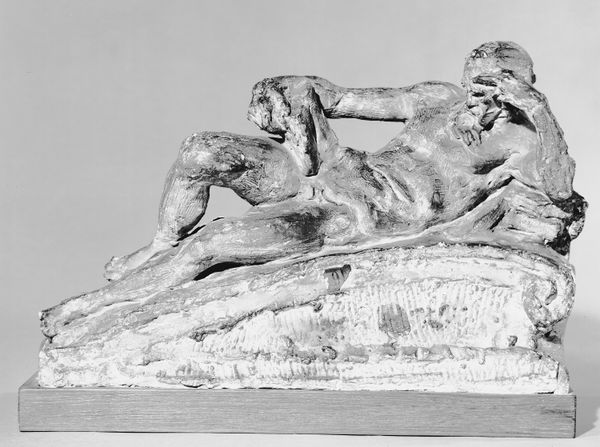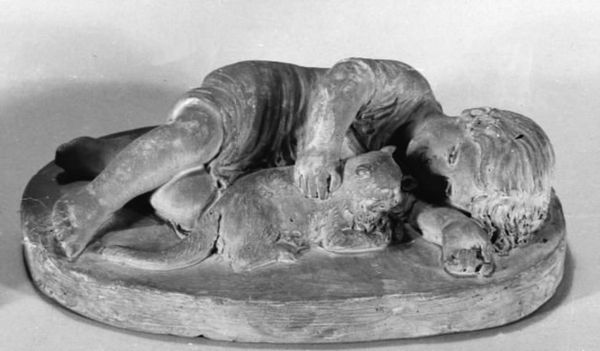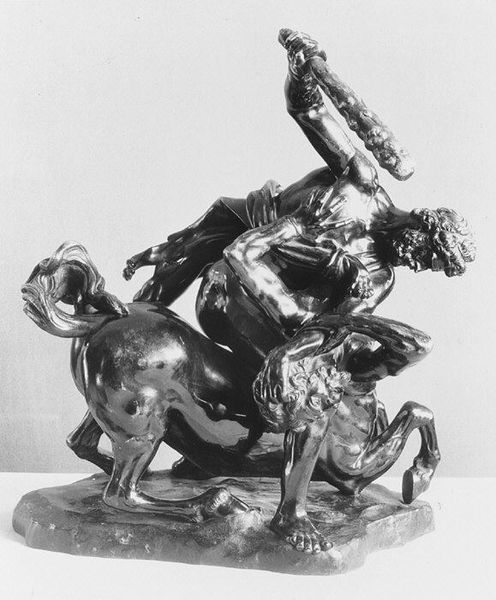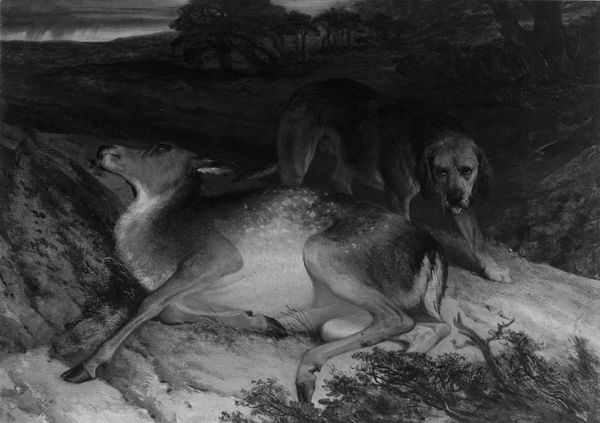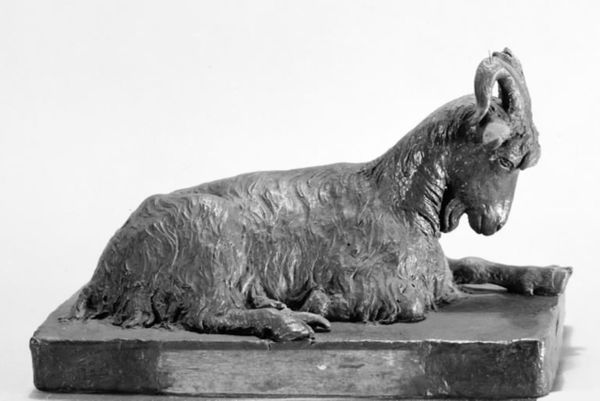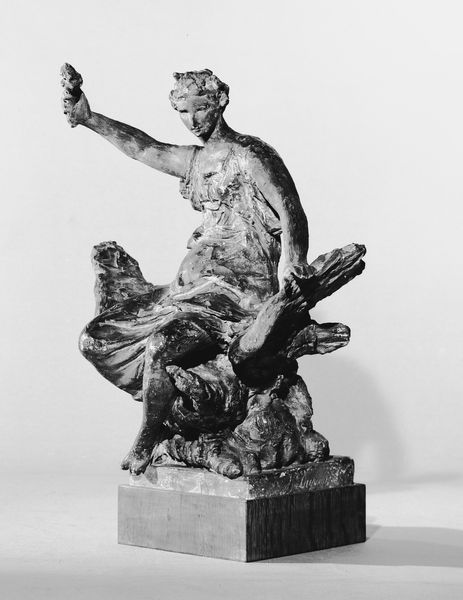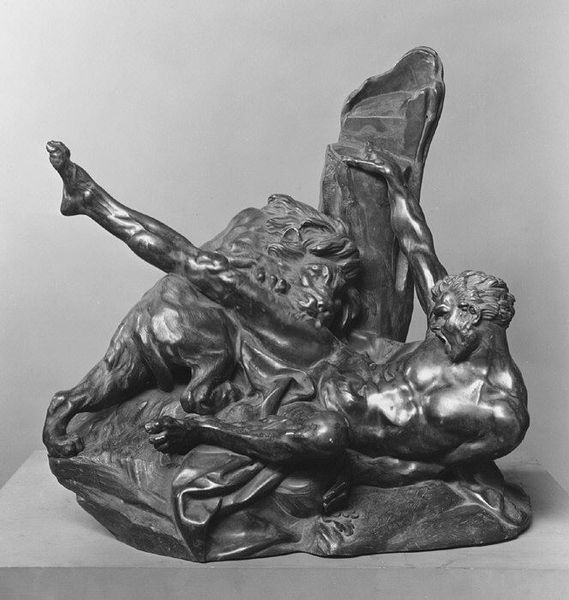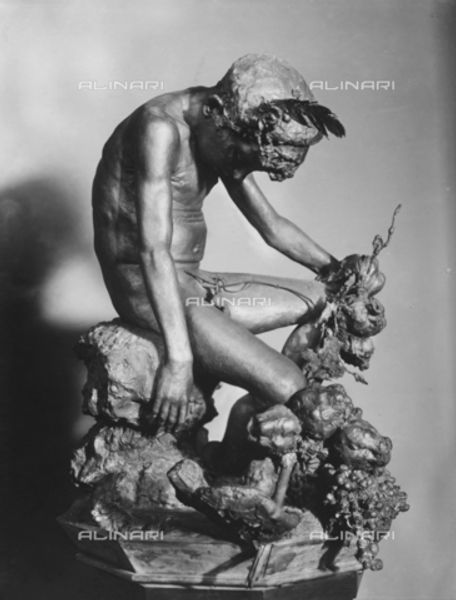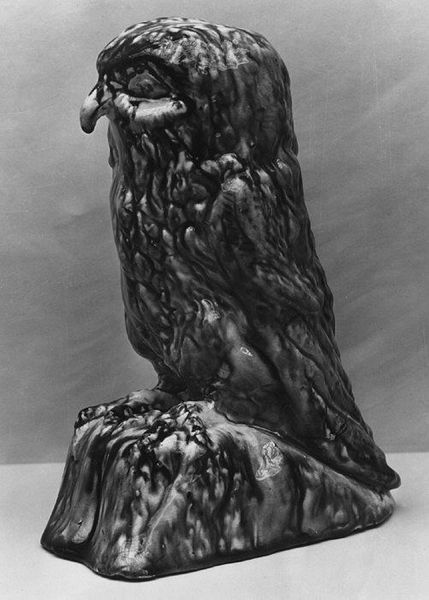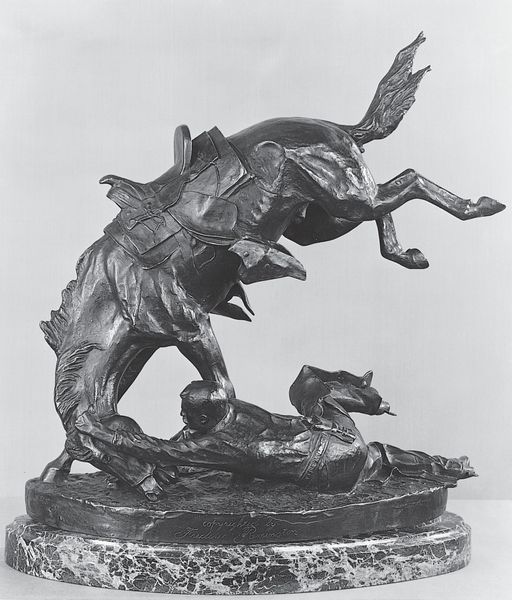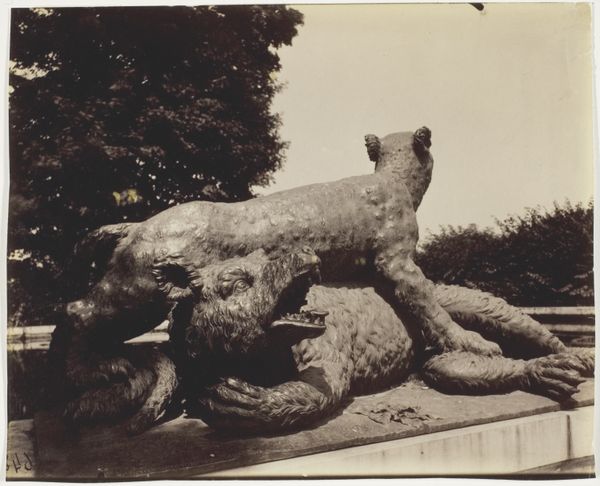
Dimensions: 26 × 37 cm (10 1/4 × 14 1/2 in.)
Copyright: Public Domain
Curator: Here we have Jean-Baptiste Carpeaux’s marble sculpture "Allegory of Agriculture," created around 1865. Editor: It feels...grounded, solid. The way the forms meld into each other, the rough texture of the marble—it conveys a real sense of earthy weight. Almost oppressive. Curator: Indeed, the composition is quite deliberate. Note the pyramidal structure, typical of neoclassical sculpture. The male figure, likely representing the laborer, is centrally positioned, reclining amidst symbols of agricultural prosperity—a bull and a globe. Editor: Is it prosperity, though? I see the weight of labor. The figure seems burdened, not celebratory. The rough texture emphasizes the harsh realities of agricultural work, particularly in 19th-century France where industrialization was rapidly reshaping rural life. This piece almost reads as a lament for a lost way of life or, worse, an unacknowledged working class. Curator: A lament, perhaps, but consider the neoclassical influence. Carpeaux clearly draws from idealized forms and allegorical language, elevating agriculture to a symbolic plane. He aims not just for realism, but for a higher, ennobling representation. Editor: I can't ignore the potential socio-political reading, though. There is a stark contrast between the glorified idea of agriculture and the reality faced by those who toiled in the fields. Were those farmers and rural workers actually included in any prosperity if we read their hard labour depicted this way as merely a "symbolic plane"? Curator: The question is whether he critiques or romanticizes through this form and the inherent contradiction... I'm drawn to how he uses light and shadow, though. The marble allows a play of contrasts, creating a sense of movement and tension despite the overall stillness of the piece. Editor: But whose story does this shadow serve and ultimately tell? It’s that tension that intrigues me. Carpeaux forces us to consider agriculture as both a romantic ideal and a tangible burden carried by real people. Curator: A beautiful encapsulation of art history's complex intersection between intention and interpretation. Editor: Yes, food for thought, literally. And a stark reminder that every artistic creation sits within its historical and societal framework.
Comments
No comments
Be the first to comment and join the conversation on the ultimate creative platform.
